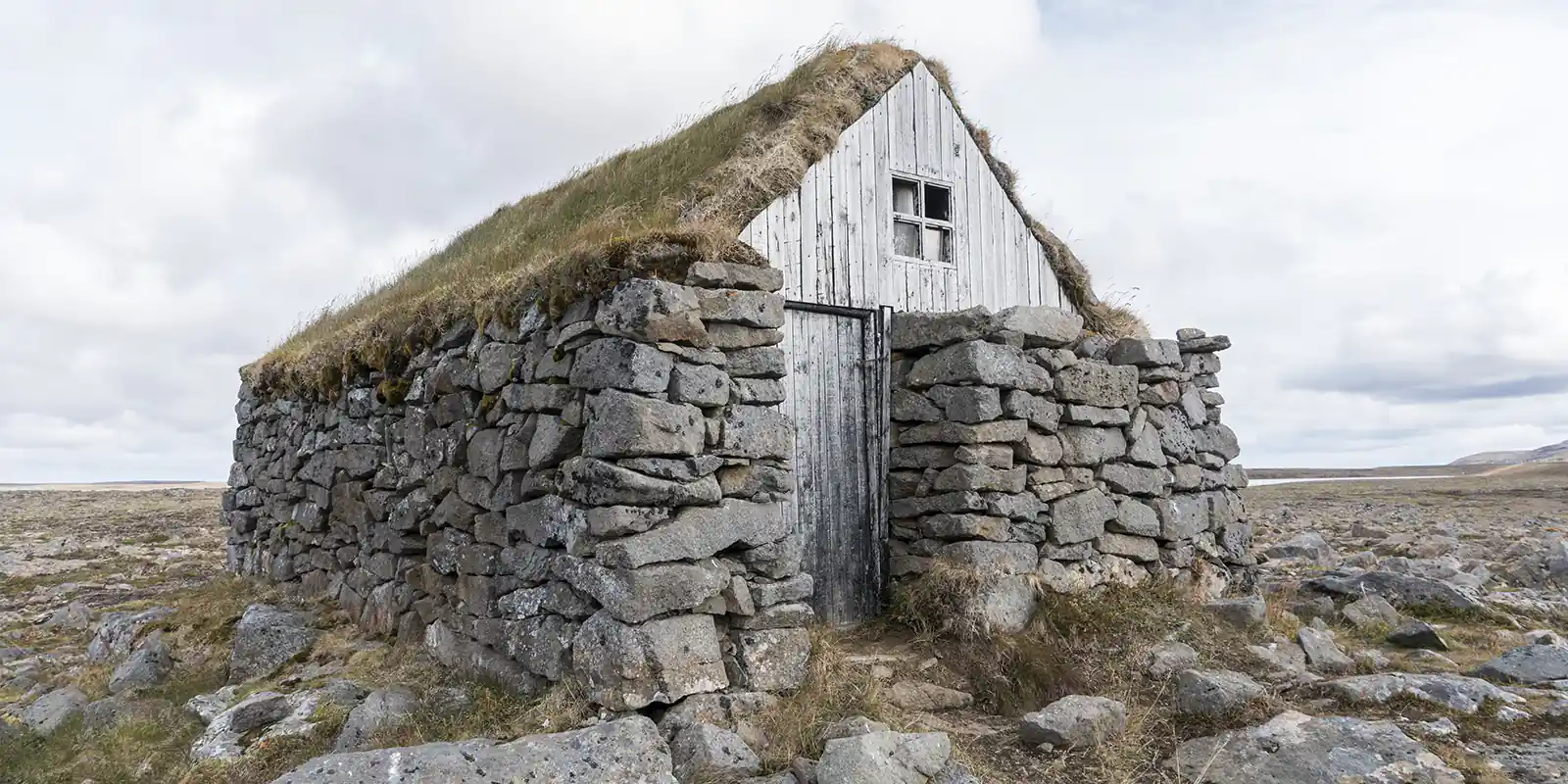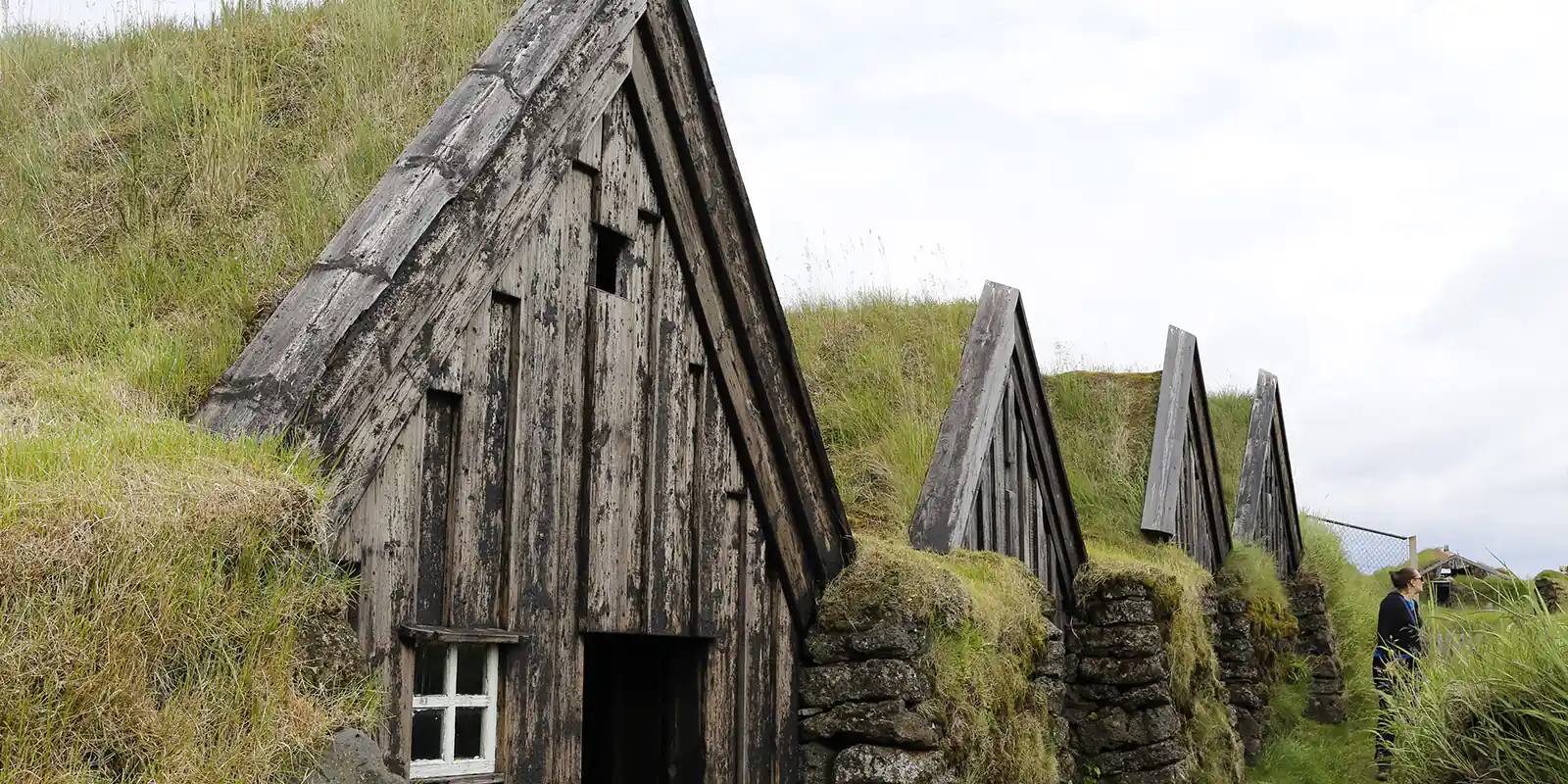A solitary turf house stands proudly among rocky fortifications, embodying Iceland's architectural heritage. 🏡🪨
Book a Stay in Traditional House Style
Traditional Icelandic turf houses, or "torfbaer," are not just architectural marvels but also a window into the rich cultural and historical heritage of Iceland. These unique houses are emblematic of the island nation and have played a pivotal role in the survival of its people in a challenging climate.
The Tradition of Icelandic Turf Houses
The iconic turf houses of Iceland find their roots in the Viking Age when the early settlers adapted their building techniques to the harsh Nordic environment. Constructed with natural and sustainable materials, these houses are not only an architectural wonder but also a testament to the resourcefulness of the Icelandic people.History and Evolution
The history of turf houses in Iceland is intertwined with the island's settlement history. In the early days, these houses were primarily built as farmsteads. Over time, they became more sophisticated and were often used by the local elite. The walls of these houses are made of stones or driftwood, providing stability and insulation. The turf roof, a distinctive feature, is adorned with grass or vegetation, offering natural insulation and camouflage. This natural insulation was crucial for preserving heat in the cold Icelandic winters.
Laufás Turf House in Eyjafjörður
One of the most iconic turf houses in Iceland, Laufás Turf House, is situated in Eyjafjörður, not far from Akureyri. This beautifully preserved house offers a glimpse into the daily life of Iceland's earlier inhabitants. You can explore the cozy living quarters, the farm, and the chapel, all under the green roofs that merge seamlessly with the landscape. Visiting Laufás Turf House is like taking a step back in time to understand the challenges and triumphs of Iceland's historic rural life.Grenjaðarstaður in Laxá Valley
Another gem is the Grenjaðarstaður, located between Husavik and Laugar. This historical site features an excellent example of a turf farmhouse. It's not just the architectural aspects that make it special; it's also the surroundings. Situated in the scenic Laxá Valley, Grenjaðarstaður offers a unique opportunity to admire the fusion of human ingenuity and nature's beauty. Walking through these preserved structures feels like walking through history itself.Why Visit Traditional Icelandic Turf Houses?
- Cultural Connection : Traditional turf houses offer a direct connection to Iceland's rich history. They provide a unique glimpse into the lives of Iceland's early settlers, their resourcefulness, and their deep connection to nature.
- Architectural Wonders : The turf houses' design is fascinating. They are not only functional but also visually appealing. The grassy roofs, with wildflowers in full bloom during summer, add a touch of magic to the landscape.
- Sustainability : In an era where sustainability is a global concern, these houses exemplify the concept. Built with local and renewable materials, they are an early example of eco-friendly architecture.
- Education and Inspiration : Whether you're interested in architecture, history, or photography, turf houses offer a treasure trove of educational and inspirational opportunities.

Journey back in time with a rustic 4-section roofed turf house, a treasure of Iceland's history. 🏡🏚️ #IcelandTradition
Where to Book a Stay in Traditional House Style
If you're captivated by the allure of traditional Icelandic turf houses, you'll be thrilled to know that you can book a stay in a modern guest house inspired by these iconic structures. While Laufás Turf House in Eyjafjörður and Grenjaðarstaður in Laxá Valley provide a window into history, Fagrafell Hostel offers a unique blend of tradition and modern comfort.A Modern Take on Tradition
Fagrafell Hostel, located a mere 50 kilometers away, reimagines the classic Icelandic turf house style. This guesthouse features grass-covered roofs that pay homage to the traditional design. The dark wood front with a white wooden edge provides a striking contrast, creating a visual masterpiece that seamlessly fits into the Icelandic landscape. The walls on two sides are adorned with rocks, dirt, and grass, mirroring the age-old technique of the past.Modern Comfort and Convenience
What sets Fagrafell Hostel apart is its commitment to modern comfort. While the exterior exudes history and tradition, the interior is a spacious, bright, and contemporary haven. The large windows flood the rooms with natural light, allowing you to bask in the scenic beauty that surrounds this cozy retreat. With modern amenities and spacious accommodations, Fagrafell Hostel provides the perfect balance of old-world charm and contemporary convenience.Your stay at Fagrafell Hostel will be an experience that combines the nostalgia of Iceland's turf houses with the comfort of modern living. You'll find yourself immersed in the history of these iconic structures while enjoying the luxuries of contemporary accommodation.